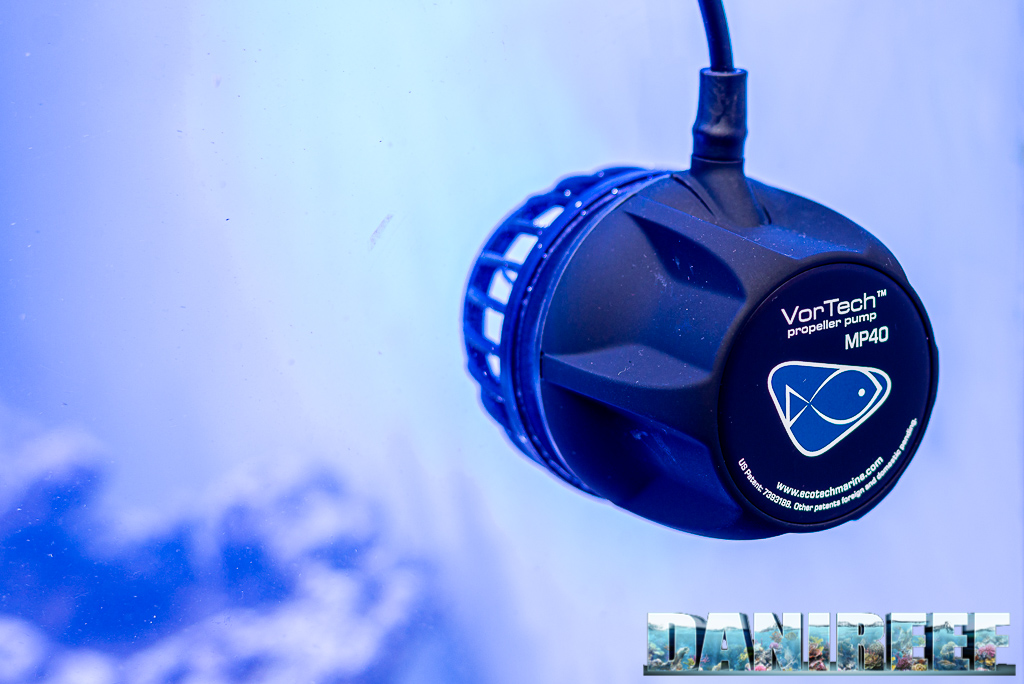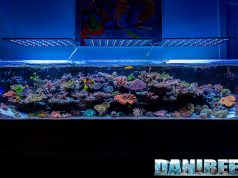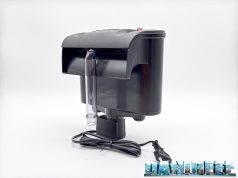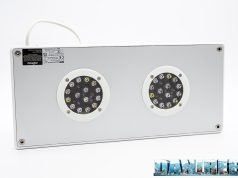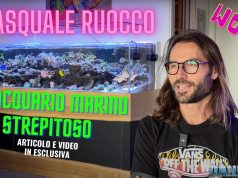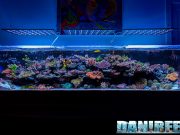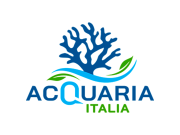The functioning modalities
At this point you can play with the various modalities, and I suggest to try them all, because each one has its interesting features and has different advantages for the aquarium. Excluded, obviously, the green modality of costant power, designed only for very particular situations.
The most interesting modalities are, for sure, TSM (Tidal Swell Mode), NTM (Nutrient Transport Mode) and Gyre (uniform clockwise and anti-clockwise movement).

The first is shown in the picture above and it works better with three pumps, two placed in the glass on the sides and the other one in the glass behind. All together they simulate the tide swell, increasing gradually the flow on one side and decreasing on the other side, with an average flow over 70%, without the wave effect. It’s great to keep in movement a big mass of water and it provides the right amount of movement in every part of the tank. Ecotech Marine suggests this modality for aquariums with SPS, I think it would be more recommended for LPS but with the attention to lower the power of the pumps in order not to damage them.
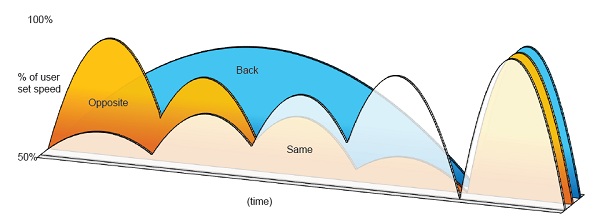
The second modality is NTM, second even in the scheme and that’s the one I prefer and I’m actually using, that alternates a pulse phase to a transport of the nutrients to the drain, increasing the power gradually until it reaches the maximum. It will create a wave motion, a good transport of nutrients both through the corals and in extraction, but with a lower rate compared to the previous method. I think it’s the best for the SPS.

The Gyre modality creates a model of flow made by levels of uniform clockwise and anti-clockwise flows that pulse in a selected break of two seconds until two hours. Obviously it requires at least two pumps.
Then there are the two classic modalities born with the pump, the Reef Crest and the Lagoonal, the first is a very energic modality that alternates movements with a very low rate, suited for SPS corals, while the second modality has a bigger average rate, but it hasn’t relevant variations then it’s suited for LPS.
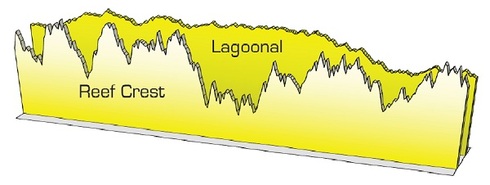
Given the fact that for both these modalities you need to change from low to high rates for a better variation, absurdly it may be better to use the modality with less variation, less energy and more flow rate with aquariums full of SPS in order to have the best motion in aquarium. Obsviously it’s a borderline possibility but it must be evaluated.

Last but not least, there are two pulse modes, divided in short and long, and depending on the pulsation time of each pump, less than two seconds in a case and until one minute in the other, you can obtain a good wave swell or a changing of currents effect.
In addiction, this controller also has a button for feeding the fish, command that also lowers the power of the pump to the minimum for some minutes. You may also set it to lower the night rate to a value of 25%, 50% (the default) and 75%. Through mobius you can use the app for the feed mode, you can choose intensity and timing, or combine different powers to the hours of the day.
Power consumption
It’s declared that the VorTech MP40QD pumps have a consumption of 37 watt.
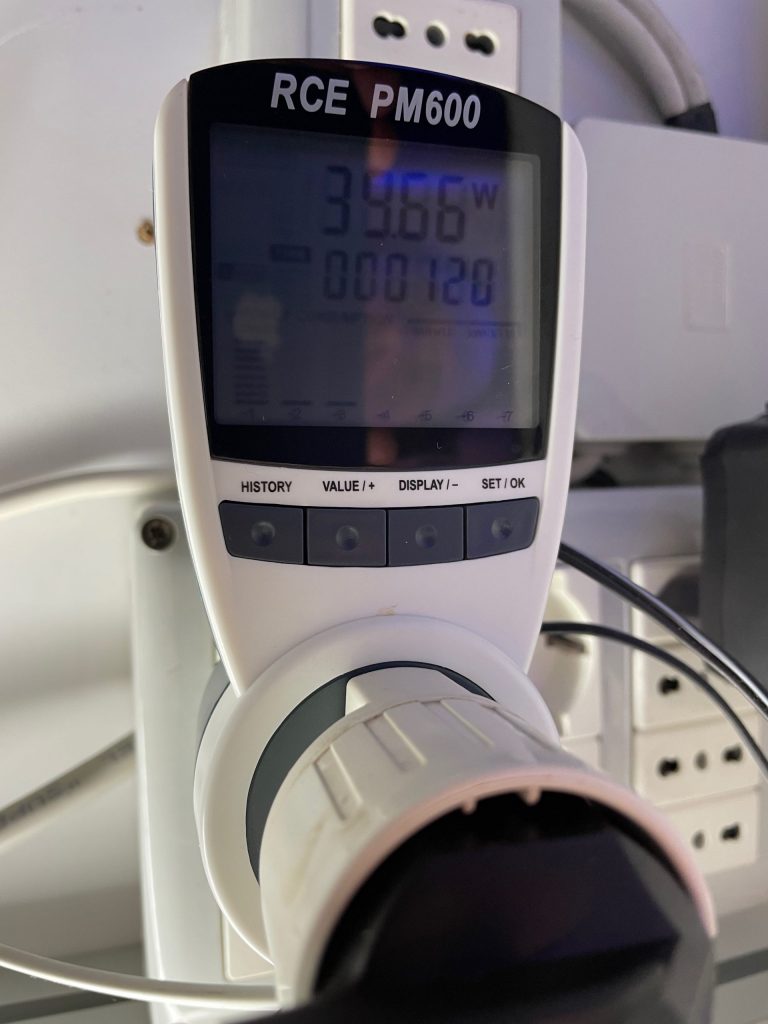
We measured a little higher consumption than delcared, of 39,66 watt. This means a cost of 94 euro, if the cost per watt stayed stable at 0,27 euro per kwh. Of course we’re considering a pump alone working at 100%. In practice, the consumption will be lower than our measurement.
The noise
The biggest problem of the previous model was exactly the noise, so that I’ve never been very comfortable in the purchase of these ones because I didn’t believe they would have been silent. But I was proven wrong. As you will see from the measurements of the noise but also from the video, these pumps are really silent.
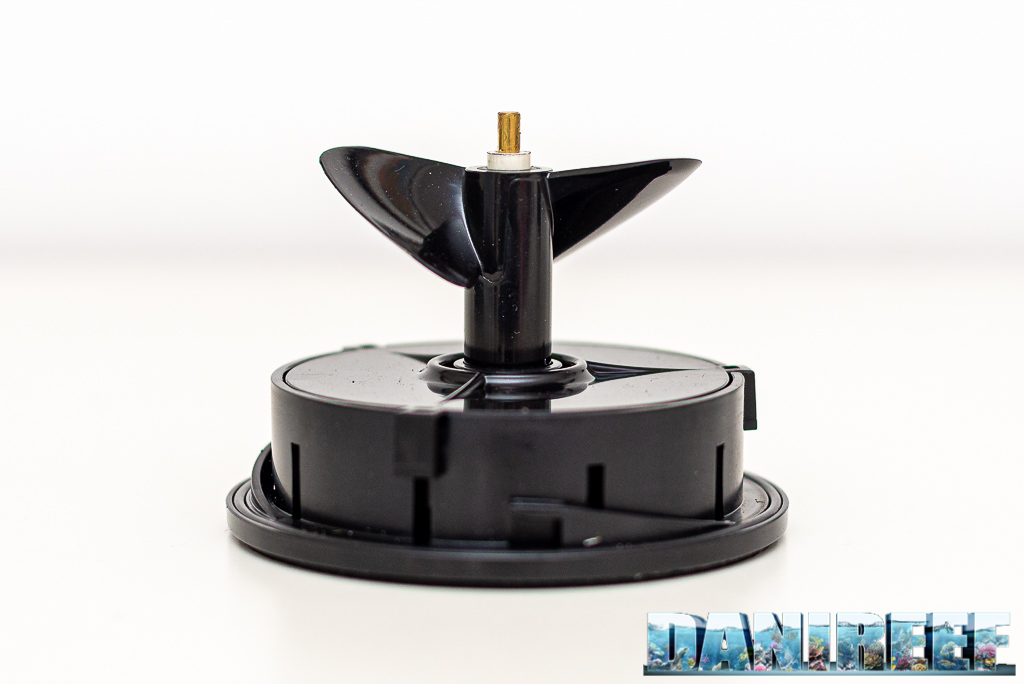
For the relevation of the noise I used my sound meter, the VOLTCRAFT 320, digital sound meter IEC 651 of II Type. Given the nature of the noise all the measurement have been done with the attenuation curve dBA, closed doube glass windows, the sound meter on a tripod at one meter of distance and with a time break of 120 seconds between the relevations, in which I measured the MINIMUM value, so to minimize the noise peaks.
Aquarium completely switched off and movement pumps switched off: 42,3 dB
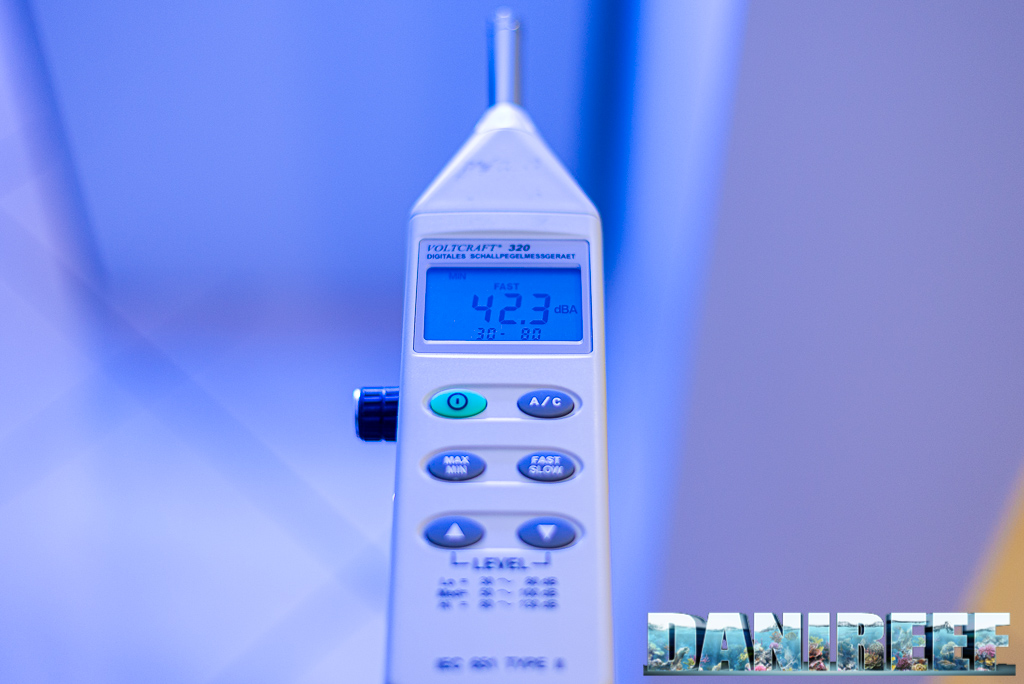
Aquarium with VorTech on, in costant flow mode (green) at maximum power: 42,6 dB
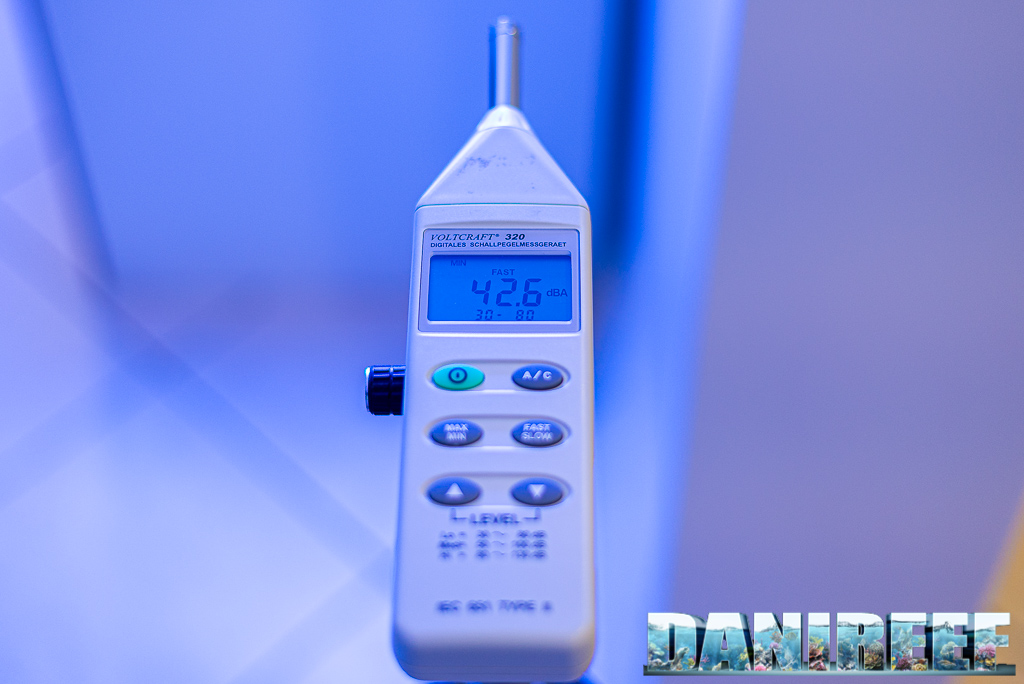
The difference in sound pressure with the pump on the pump off is 0,3 dB, almost 0. The pumps are completely quiet! If you watch the video you’ll see that I’m so shocked that I must have repeated a thousand times.
Conclusions
The VorTech were seen as the queens of the movement pumps even considered the problems of the generation before. But since then they improved even more and, yes, I think they’re the best on the market. They’re not cheap, because this quality is true, but they don’t make any noise anymore, so they can be insert in every context.
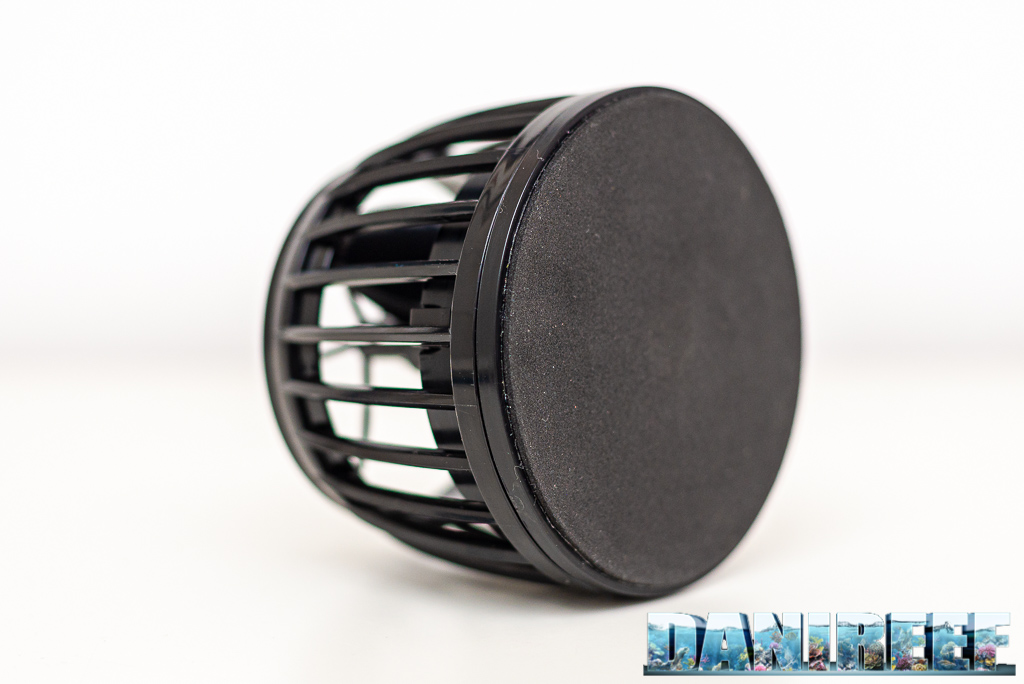
With Mobius you have the easy of the setting, the immediacy (but I used it through iPhone and iPad) and the flexibility are incredible. They’re easy to clean because you have no problem extracting them from the aquarium. They only have one problem, that comes from their particulary construction: they can’t be oriented and for someone this can be a real problem. Otherwise, the flow is powerful, but gentle and wide, and itt’s possibile to buy their backup battery… It’s hard to ask for more, to think of more. The pump is even beautiful to see, even appealing, engineering speaking (don’t forget I’m an hydraulic engineer!), it doesn’t heat the aquarium and has a very little bulk in the tank. All of this at a considerably high price, not for everyone, because 419 euro for a single pump aren’t cheap.
PROS
![]() Spectacular flow
Spectacular flow![]() Powerful, easy to set and to clean
Powerful, easy to set and to clean![]() Very well built
Very well built![]() Absolutely silent. 0,3 dB of difference from being on and off.
Absolutely silent. 0,3 dB of difference from being on and off.
CONS
![]() Not directionable, and can be a problem for someone
Not directionable, and can be a problem for someone![]() The quality has a price, and it’s not cheap
The quality has a price, and it’s not cheap
Ecotech Marine, and so the VorTech, are distributed in Italy by ReefLine, synonym of quality and competence.
